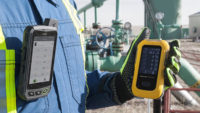The average construction site is full of equipment and sharp objects that can permanently injure a person’s hands. Cold temperatures and hazardous chemicals can also be potentially harmful to the nerves or skin, leading to a loss of feeling or control. Workers need to retain control of their hands while engaging in various activities on the job. Wearing gloves might not be enough to protect workers’ hands, and not all gloves are designed for the task at hand. Construction crews can use these tips to protect themselves and their hands from injuries.
Evaluate the risks
Every worksite is different. Crews should start by identifying the objects and activities that can lead to hand injuries and see what can be done to reduce the risk. This may include subbing in different equipment, setting up protective barriers, or changing how workers interact with the machine or object. They should also consider the entire work environment, including the temperature, weather, and the types of substances and debris traveling through the air.
Choose the appropriate hand protection
Workers must wear hand gear designed specifically for the activities involved in their job. The safety gloves should protect the wearer from hazards present in the job site, such as punctures and cuts, toxic chemicals, fire, and flying sparks. The material should be thick enough to shield the person’s hands from cuts, tears, and rips. They may also need to be waterproof and warm enough to prevent frostbite in cold weather when working in the winter. As usual, the wearer should still be able to grip objects and tools with the gloves. Proper safety gloves come with a textured outer lining that helps the person hold items even in messy or dirty conditions.
Ensure a proper fit
Each person should try on the gloves to ensure they will stay on throughout the day. The material shouldn’t be too loose, or it may get caught on machinery, sharp surfaces, or interfere with their daily activities.
Replace and remove damaged gloves
Workers should also get in the habit of inspecting their gloves before each shift for possible damages like cuts, holes, unraveling thread, or weak spots, like caked with too much dirt, that could leave them vulnerable on the job. If the safety gloves are deemed unsafe, they should be removed from rotation to prevent someone from using them by mistake. The gloves must then be replaced or repaired with the proper materials. Some gloves can be reused by being properly washed. Follow the manufacturer’s maintenance guidelines to extend the life of your safety gloves.
Focus on hand safety
The entire construction crew will need to learn how to safely navigate the workplace and perform certain tasks without putting their hands at risk. This includes keeping hands away from equipment and machines while in use, having workers cut away from themselves when using sharp tools, and turning machines off when maintaining them. Everyone should feel comfortable asking questions or removing themselves from a situation if they feel unsafe.
Hand protection is often a team effort. Keep these tips in mind to create a safe, productive work environment for your crew.



